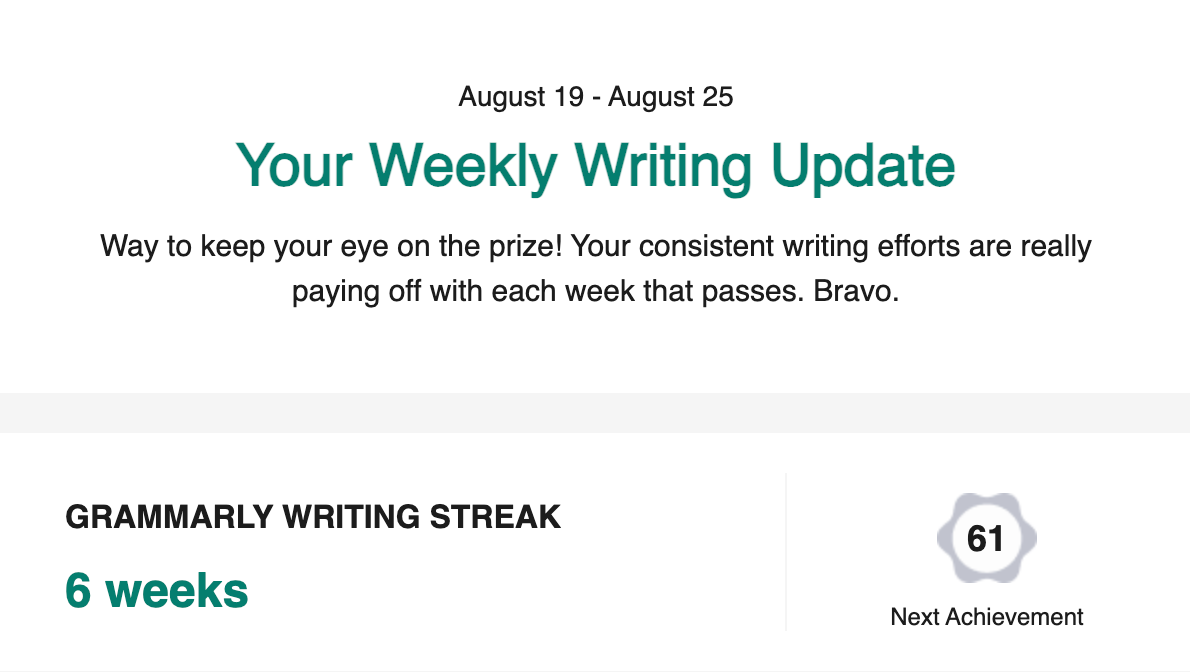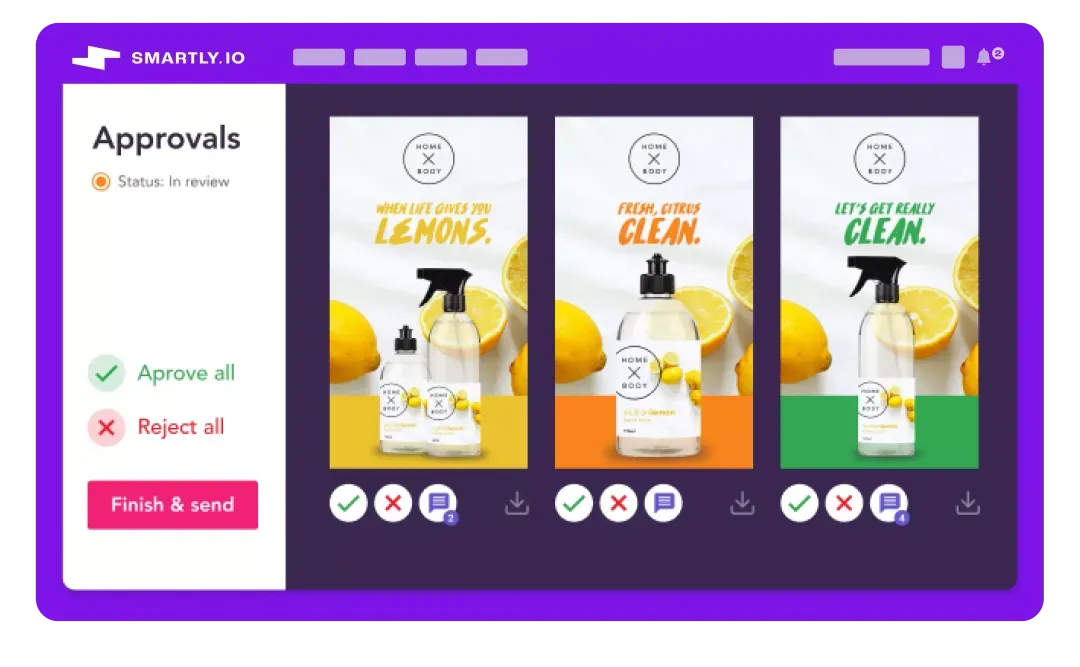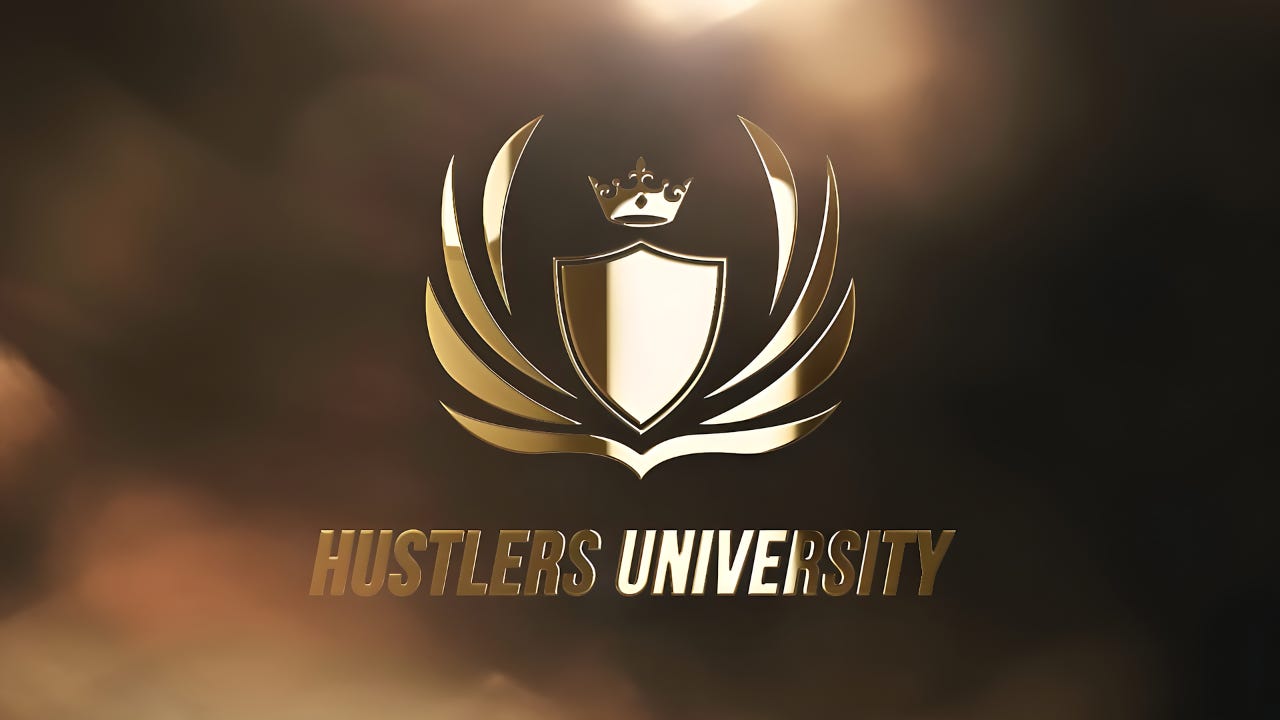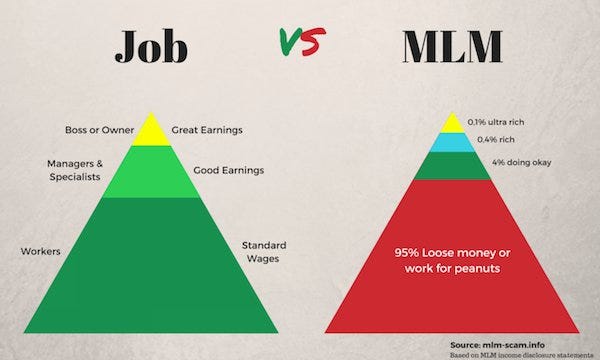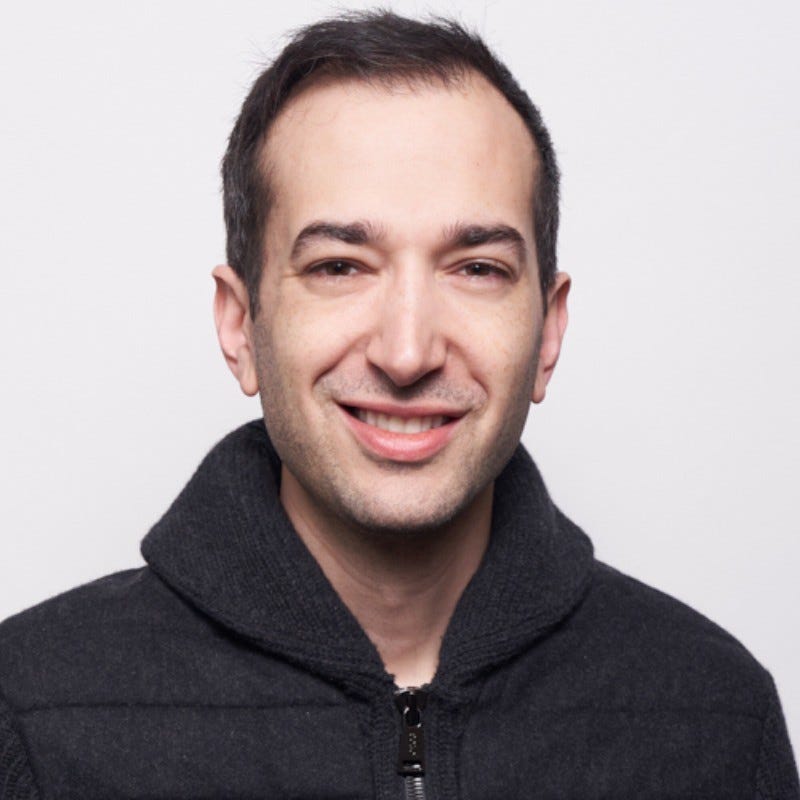Following up on last week’s article, I am using this week’s content to break down four more companies that employed a well-known growth strategy exceptionally well. To kick things off, I will start with a company that many readers are likely already familiar with, the ubiquitous Grammarly.
For anyone not interested in reading the full article, you can find a summary with all of the key points below:
TLDR Summary
Grammarly: Email Marketing Strategy
Background: Grammarly is an AI-powered writing assistant with over 30 million users and a $13 billion valuation.
Key Innovative Strategies:
Gamification: Uses a Weekly Insights Report featuring metrics like user errors and vocabulary diversity, motivating users to beat their own records.
Fear of Missing Out (FOMO): Highlights “advanced issues” only visible to premium users and sends time-sensitive discount emails to encourage upgrades.
AI-Powered Lead Scoring: Uses Salesforce’s AI tools to identify business leads and determine optimal times for outreach, boosting plan upgrades by 80%.
HelloFresh: Paid Ads Strategy
Background: Meal kit delivery service expected to generate $8.3 billion in revenue in 2024.
Key Innovative Strategies:
Hyper-Customized Video Ads: Created 12 different personalized Christmas ads that refreshed daily, scaling the process using video templates linked to product feeds.
Sophisticated Segmentation: Tailored content for three distinct audience segments, customizing each step of the funnel to suit specific needs.
Experimenting with Novel Ad Channels: Utilized platforms like Apple Search Ads and In-App Offers on Spotify to access non-traditional ad spaces.
Hustler’s University: Affiliate Marketing Strategy
Background: Andrew Tate’s online education platform (rebranded to The Real World) scaled to 100,000 subscribers and $5 million monthly revenue.
Key Innovative Strategies:
Leveraging Short-Form Video on TikTok: Encouraged affiliates to produce and distribute short clips on TikTok, utilizing the platform’s reach and viral nature.
Avoiding “Pyramid Scheme” Allegations: Provided business education content beyond affiliate marketing, maintaining credibility and avoiding legal issues.
Tactics to Avoid TikTok’s Content Duplication Rules: Affiliates used minor video edits (e.g., changing fonts, zoom effects) to evade duplicate content strikes.
Verkada: Sales Automation Strategy
Background: Cloud-based enterprise security company valued at $3.2 billion in 2024.
Key Innovative Strategies:
Auto-Generating Personalized Landing Pages: Created 600 unique landing pages for prospects using automation tools, saving time and boosting engagement.
Redefining SDR Roles: Introduced Market Development Representatives (MDRs) to automate initial outreach, making MDRs 4x as effective as traditional SDRs.
Direct Mail Gifting for Cold Prospects: Employed Sendoso’s gifting platform to send high-quality gifts to prospects, turning cold outreach into warm leads, resulting in a 4x return on investment.
Key Takeaways
Each company’s success stems from an in-depth understanding of its user base and a tailored approach to engagement.
Gamification, personalization, and creative use of AI are effective tools for enhancing user retention and driving conversions.
Leveraging novel channels and redefining traditional roles can help companies stand out in competitive industries.
Full Article
#5 - Email Marketing - Grammarly
Background and Results:
Grammarly is an AI-powered writing assistant that enhances the quality and clarity of written communication. Through its effective sales automation and email marketing strategy, Grammarly has built a business valued at $13 billion. It is trusted by over 30 million people and 70,000 professional teams and is also used by 96% of Fortune 500 companies.
How They Did It:
Like many software-as-a-service (SAAS) businesses, Grammarly relies on a Freemium model. Freemium is a business model that offers users basic product or service features at no cost and charges a premium for supplemental or advanced features. Everyone loves getting free things, and for most Freemium businesses, the tricky part is not getting users to sign up for a free trial, but rather to upgrade to a paying user. However, through AI tools and a shrewd understanding of psychology, Grammarly has seen a strong conversion rate from free to paid plans.
What was Innovative About Their Strategy:
1). Gamification: For many brands that utilize a freemium model, users initially sign up for a free plan and express much interest in the product. However, their interest quickly fades before they consider upgrading to a paid plan. Grammarly has done a fantastic job keeping its users engaged through its Weekly Insights Report.
The Weekly Insights Report is a report that Grammarly sends its users with several captivating features. It tells them how many mistakes were made for the week versus the words written, how varied and diverse a user’s vocabulary is compared to other Grammarly users and the three most frequent grammatical errors that Grammarly corrected for the user. All of these things create consistent metrics that users are going to be keen to beat, and this is furthered by the badges users can earn for consecutive weeks of writing with Grammarly. This report is a fantastic way to keep Grammarly at the top of users’ minds, increasing the chance they upgrade plans.
2). Using FOMO to Push Upgrades: Fear Of Missing Out, colloquially known as FOMO, is a tactic that Grammarly brilliantly uses to push users to upgrade. As part of its Weekly Insights Report, Grammarly will also share an extensive list of ‘Advanced Issues’ unique to your writing that can only be seen if you upgrade to their paid plan. If you are still on the fence after that, Grammarly gives you one last chance to upgrade: a 10% discount email. The only catch? It expires after 48 hours. We all love a good discount, and for a good chunk of users, this will spur them to take action.
3). AI Lead Scoring:
Grammarly historically has focused on the B2C market, selling directly to users. Still, more recently, they have also made a big push into the B2B market, selling to key decision-makers at big companies. Grammarly uses Salesforce’s Account Engagement feature to identify multiple Grammarly users who work at the same company, predicting the potential need for a business account. They then use Salesforce’s Einstein AI Account Insights feature to score the leads based on their number of users and how they engage with Grammarly resources, and they route them to the best salesperson to close the leads. When emailing these leads, Salesforce’s Einstein Engagement Frequency predicts when to email prospects based on what they’ve already received and when. Through the use of these AI tools, Grammarly was able to increase its plan upgrades by 80%. In addition, they have achieved an email unsubscribe rate of only .04% vs. an industry average of 2%.
Why it Worked for Them and What We Can Learn:
While most brands send generic emails to users with pushy appeals to upgrade, Grammarly has achieved fantastic results through a much more subtle strategy. They provide consistent weekly value through their Weekly Insights Report, which other brands can certainly aspire to do. Instead of pressuring users, they frequently highlight the exciting new features you can access on the paid plan, all while offering strategic discounts to those who might still be on the fence. Finally, they have leveraged AI tools brilliantly with their email marketing strategy, something that all brands should seek to embrace.
#6 - Online Paid Ads - HelloFresh
Background and Results:
HelloFresh is a popular meal kit delivery service that provides customers with fresh, pre-measured ingredients and easy-to-follow recipes for home preparation. The company is expected to generate over $8.3 billion in Revenue in 2024, and its successful paid ads strategy was a significant factor in its growth.
How They Did It:
HelloFresh used a combination of Paid Search ads on Google, Display ads, Native Advertising on Taboola and Outbrain, and Social ads on Facebook and Instagram. They also prioritize landing pages and ad strategies.
What was Innovative About Their Strategy:
1). Hyper-Customized Video Ads at Scale: HelloFresh’s goal in 2019 was to create customized video ads for Facebook’s 2019 Christmas campaigns. Specifically, they wanted to target 12 different markets with personalized Christmas countdown ads that refresh daily with a customized copy in various ad formats. By using Smartly, they could link video templates to their product feed, creating massive numbers of unique video ads that could then be pushed directly to Facebook. This enabled them to 10x their video production and achieve their objective handily.
2). Sophisticated Segmentation Strategy: HelloFresh focuses on three primary segments: Working busy professionals who don’t have much time to cook, Women aged between 30 and 50 who care about health and nutrition, and athletes and individuals on a fitness journey who use HelloFresh to help them stay on track with their dietary goals. HelloFresh does a fantastic job of tailoring all content throughout the entire funnel to make it unique for users in these three segments. From ads to landing pages, follow-up emails, and customer onboarding, HelloFresh does an incredible job of tailoring the experience to the needs of each group.
3). Willingness to Experiment with Novel Ad Channels: HelloFresh pioneered unique advertising channels such as Apple Search Ads, and In-App Offers on Spotify, allowing potential customers to access the HelloFresh website while browsing podcasts.
Why it Worked for Them and What We Can Learn:
Many brands can learn from HelloFresh’s willingness to experiment and its hyper-segmented and customized ad strategy. While the same level of customization and hyper-segmentation may be overkill for smaller brands, taking a page out of their playbook may prove beneficial as your brand scales.
#7 - Affiliate Marketing - Hustler’s University (The Real World)
Background and Results:
While he is undoubtedly a polarizing figure with highly questionable ethics, Andrew Tate’s Hustler’s University (which has now been rebranded to ‘The Real World’) grew to an estimated 100,000 subscribers and $5 million in monthly Revenue through a highly innovative affiliate marketing strategy.
How They Did It:
Affiliates were encouraged to create and post short-form video content featuring Andrew Tate. The content was designed to be easily replicated and modified, allowing mass distribution. For every new sign-up that students helped drive, they would get 50% of the 1st month’s fee, or around $25.
What was Innovative About Their Strategy:
1). Evading “Pyramid Scheme” Allegations: Historically, many companies have been shut down for being pyramid schemes, and Hustler’s University has had no shortage of critics who claim that it falls squarely within that category. However, by offering other business content outside of affiliate marketing, including copywriting, drop-shipping, cryptocurrency investing, and more, Hustler’s University has so far managed to claim that it is an all-purpose business education platform. By doing so, it has avoided getting shut down.
2). Promotion Through TikTok: Amway, one of the most influential multi-level marketing (MLM) companies, was founded in 1959 and often relies on people selling to their friends, family, and immediate network. However, any one person’s network is only so extensive, and they will be relatively capped as far as how many people they can reach.
With the advent of social media, reaching a much more comprehensive range of people and expanding one’s circle of influence became possible. However, most social media platforms are built off social graphs and prioritize content from accounts you follow; TikTok’s algorithm is designed to help users constantly discover new content and creators. This makes it easier for new creators to gain visibility. In other words, no-name accounts could promote highly inflammatory clipped content from Andrew Tate and get massive reach with it in a way that would not have been possible on any other social media platform.
3). Tricks to Avoid TikTok’s “Duplicate Content” Strikes: TikTok has rules in place to try to deter duplicate content on its platform, and it primarily does this by limiting your audience reach and potentially banning you from its platforms. However, Hustler’s University students were taught tricks to evade the duplicate content bans, including changing the video’s fonts and subtitles, adding zoom-in and out effects, playing around with the colors of the video, and more. This enabled them to flood the TikTok platform with Tate content without getting penalized.
Why it Worked for Them and What We Can Learn:
The Hustler’s University affiliate strategy succeeded primarily because it was mainly in the right place at the right time. It was an innovative approach to social media that essentially caught TikTok off guard and made a boatload of money before anyone knew what hit them.
With that said, it is believed that TikTok has taken measures to enhance its duplicate content detection abilities and tighten community guidelines to make it harder for others to replicate this strategy in the future. Despite these changes, you and your team can learn from pieces of the strategy by clipping your company’s videos to create more short-form video content, spread social media posting across more of your team to enhance reach, and make TikTok a core part of your strategy due to the increased likelihood of going viral on the platform versus alternatives.
#8 - Sales Automation - Verkada
Background and Results:
Sales automation uses technology to streamline and automate various sales tasks and processes. Through effective sales automation, a company can achieve far superior scale and results compared to one that relies purely on traditional sales methods.
Verkada is a cloud-based enterprise security company that provides intelligent video surveillance, access control, environmental sensors, and alarms in one unified platform. Since its founding in 2016, Verkada has achieved massive growth, hitting a $3.2 billion valuation in September 2024. A large part of its success can be attributed to its innovative sales automation strategy.
How They Did It:
Verkada’s VP of Marketing, Idan Koren, prides himself on being a scientist, having completed a BS in Chemistry from Duke. By looking at sales and marketing from a first-principles perspective, refusing to accept the prevailing dogma, and trusting the data wherever it led him, he innovated and pushed Verkada forward.
What was Innovative About Their Strategy:
1). Auto-generating personalized landing pages for all prospects: It’s common knowledge that customized landing pages outperform generic landing pages for both sales and marketing, but Verkada took this to a whole new level. By connecting Clay to Webflow, Verkada could click a button and generate 600 unique landing pages on the fly. Each page includes information like a prospect’s job title, company, company logo, and more. Furthermore, a single change to a Clay table pushes live updates to all published landing pages, eliminating the need for tracking and manually updating the pages in the future.
2). Transforming the SDR role: Through thoughtful analysis, Verkada’s growth team found two significant observations about Sales Development Rep (SDR) activity:
-SDRs spend up to 70% of their time attempting to get ahold of prospects, leaving only about 10% left to interact with potential customers.
-SDRs are confined to contacting a specific set of leads in a specific time zone, a common practice on most sales teams.
To solve this, Verkada created a new role called the Market Development Representative (MDR), which automated the initial prospect outreach using a combination of emails, calls, and LinkedIn messages. MDRs only get pulled in once they have received a response from a prospect. In addition, MDRs are empowered to follow up on the lowest-hanging fruit of outbound leads without the constraints of having a specific territory or timezone. Through this innovative approach, Verkada’s MDRs can qualify an average of 6 Sales Qualified Leads (SQLs) or meetings booked daily compared to 1.5 SQLs by SDRs (as measured using Verkada internal data), making them 4x as effective.
3). Using Direct Mail Gifting to Turn Cold Prospects Warm: Verkada is a power user of Sendoso, an AI-enhanced gifting automation platform. As the first touchpoint, Verkada sends prospects a gift through direct mail, effectively allowing them to turn cold emails into warm outreach. This innovative strategy has meant that for every $1 spent, Verkada earned $4 based on bookings within a year.
Why it Worked for Them and What We Can Learn:
Verkada is a refreshing celebratory story about what success looks like when you think outside the box. Their data-driven, first-principles approach is something that we can all learn from. In addition, their strategies of hyper-customizing landing pages for each prospect, fundamentally changing the way SDRs function, and using gifting to warm up prospects are all valuable ideas to test and apply in your business.
Conclusion
After reading this article, you should understand the eight well-known growth strategies and some valuable ideas and takeaways to apply. In the future, we will see more growth marketers take the approach of Idan Koren at Verkada: looking at things from a first-principles perspective and stretching the limits of what has been done before.






